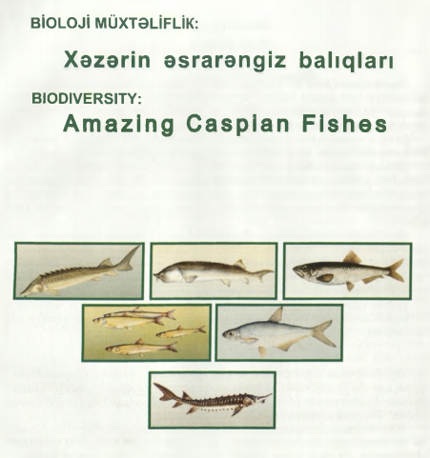Documents
This section features public documents and files uploaded by the stakeholders and custodians of the Caspian Sea environment.
 Technical-scientific meeting on the trans-boundary river basins Ural and Kigash - Astana - June 2016Sat, 21/04/2018 - 12:40+12
Technical-scientific meeting on the trans-boundary river basins Ural and Kigash - Astana - June 2016Sat, 21/04/2018 - 12:40+12- Attached documents
- Metadata
- Year
- 2016
 Kazakhstan's Second National Communication to the Conference of the Parties of the United Nations Framework Convention on Climate ChangeSat, 21/04/2018 - 12:00The calculations were made using the MARKAL modeling tool and were based on strategic development plans for different economic sectors. The Communication assesses electricity saving potential in respect of energy efficiency and lower carbon intensity. It also reflects the possible costs related to GHG emissions reduction mea
Kazakhstan's Second National Communication to the Conference of the Parties of the United Nations Framework Convention on Climate ChangeSat, 21/04/2018 - 12:00The calculations were made using the MARKAL modeling tool and were based on strategic development plans for different economic sectors. The Communication assesses electricity saving potential in respect of energy efficiency and lower carbon intensity. It also reflects the possible costs related to GHG emissions reduction mea- Description
The calculations were made using the MARKAL modeling tool and were based on strategic development plans for different economic sectors. The Communication assesses electricity saving potential in respect of energy efficiency and lower carbon intensity. It also reflects the possible costs related to GHG emissions reduction measures in all economic sectors.
For the first time in Kazakhstan we have analysed the influence of climate change on forests and human health, as well as the data on mudflow activity and the change in glaciers. For climate change calculations, we used the data of the hottest decade (1995- 2005) combined with unified WMO methodology and climate change indices. Climate change scenaria were developed using the most recent ocean-atmosphere circulation models.
Nurgali Ashimov
Minister of Environment Protection Republic of Kazakhstan- Attached documents
- Metadata
- Year
- 2009
 Biodiversity Assessment for KazakhstanSat, 21/04/2018 - 11:35The approach used in this assessment was to collect and analyze information on biodiversity and related areas through documentation searches and interviews with key individuals and organizations concerned with biodiversity, both throughout Kazakhstan and in Washington, D.C. (see Annex C, List of Persons Contacted). An extens
Biodiversity Assessment for KazakhstanSat, 21/04/2018 - 11:35The approach used in this assessment was to collect and analyze information on biodiversity and related areas through documentation searches and interviews with key individuals and organizations concerned with biodiversity, both throughout Kazakhstan and in Washington, D.C. (see Annex C, List of Persons Contacted). An extens- Description
The approach used in this assessment was to collect and analyze information on biodiversity and related areas through documentation searches and interviews with key individuals and organizations concerned with biodiversity, both throughout Kazakhstan and in Washington, D.C. (see Annex C, List of Persons Contacted). An extensive series of field trips was undertaken.
- Attached documents
- Metadata
- Year
- 2001
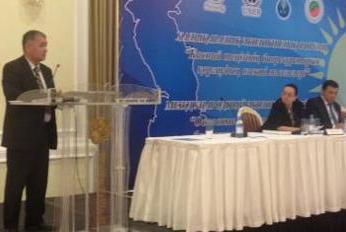 Aktau forum on the problems conservation of the Caspian Sea biodiversitySat, 21/04/2018 - 11:28The Forum is the first event held in the framework of theDay of Caspian Sea celebration . "Oil and gas offshore fields' development, which is beingcarried out at difficult geological conditions, increases man-caused impacts on environment of the region and creates real emergencies, including oil spills, as hydrocarbon depos+1
Aktau forum on the problems conservation of the Caspian Sea biodiversitySat, 21/04/2018 - 11:28The Forum is the first event held in the framework of theDay of Caspian Sea celebration . "Oil and gas offshore fields' development, which is beingcarried out at difficult geological conditions, increases man-caused impacts on environment of the region and creates real emergencies, including oil spills, as hydrocarbon depos+1
- Description
The Forum is the first event held in the framework of theDay of Caspian Sea celebration .
"Oil and gas offshore fields' development, which is beingcarried out at difficult geological conditions, increases man-caused impacts on environment of the region and creates real emergencies, including oil spills, as hydrocarbon deposits are located in an ecologically sensitive area of the sea. The consequences of possible industrial accident capable of impacting the territories of neighboring countries", said Bapy.
According to his words, for monitoring of oil fields in thenorth-eastern part of the sea, there was established the North Caspian ecological base for oil spill response. "Ak Beren" blowout response group specialists are annually trained in the UK.
- Attached documents
- Metadata
- Year
- 2013
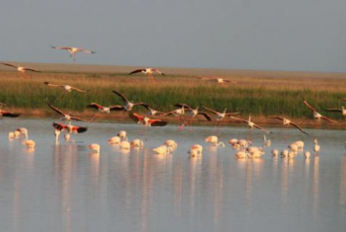 Akzhaiyk Reserve General InformationSat, 21/04/2018 - 11:16State Nature Reserve "Akzhaiyk" (Kazakh "Aқzhayyқ" memlekettіk tabiғi reserves) is located in the Makhambet Atyrau region, in the surrounding lands outside the city of Atyrau. It was created by the Government of the Republic of Kazakhstan on February 6, 2009 in the delta of the Ural River and the adjacent coast of the Caspia
Akzhaiyk Reserve General InformationSat, 21/04/2018 - 11:16State Nature Reserve "Akzhaiyk" (Kazakh "Aқzhayyқ" memlekettіk tabiғi reserves) is located in the Makhambet Atyrau region, in the surrounding lands outside the city of Atyrau. It was created by the Government of the Republic of Kazakhstan on February 6, 2009 in the delta of the Ural River and the adjacent coast of the Caspia
- Description
State Nature Reserve "Akzhaiyk" (Kazakh "Aқzhayyқ" memlekettіk tabiғi reserves) is located in the Makhambet Atyrau region, in the surrounding lands outside the city of Atyrau. It was created by the Government of the Republic of Kazakhstan on February 6, 2009 in the delta of the Ural River and the adjacent coast of the Caspian Sea. [1] The Ural River Delta and the adjacent coast of the Caspian Sea is included in the list of wetlands of international importance. The reserve was the second Kazakh territory after the Tengiz-Korgalzhyn lake system, which went down in the list. The hydrological regime is characterized by a gradual rise the water level in the Ural River in the second half of April, with the transition in May-June in spring and summer, with a peak at the end of May or the first half of of June. After the first flood peak starts fast and then gradual decline, passing in August and September in the autumn low water.
- Attached documents
- Metadata
- Year
- 2012
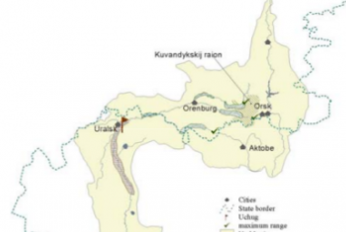 The Ural River Sturgeons: Population Dynamics, Catch, Reasons for Decline and Restoration StrategiesSat, 21/04/2018 - 11:06The Ural sturgeon yield-to-fishery relative to river discharge was the highest in the Caspian Sea till recently. The environmental conditions to secure natural reproduction are still satisfactory for successful sturgeon reproduction. However, nowadays the catch in all regional sturgeon species is negligible. The Ural sturgeo
The Ural River Sturgeons: Population Dynamics, Catch, Reasons for Decline and Restoration StrategiesSat, 21/04/2018 - 11:06The Ural sturgeon yield-to-fishery relative to river discharge was the highest in the Caspian Sea till recently. The environmental conditions to secure natural reproduction are still satisfactory for successful sturgeon reproduction. However, nowadays the catch in all regional sturgeon species is negligible. The Ural sturgeo
- Description
The Ural sturgeon yield-to-fishery relative to river discharge was the highest in the Caspian Sea till recently. The environmental conditions to secure natural reproduction are still satisfactory for successful sturgeon reproduction. However, nowadays the catch in all regional sturgeon species is negligible. The Ural sturgeon population dynamics are analyzed along with some anthropogenic and natural factors affecting them. It is argued that legal overfishing (including all legal means of fish removal), based upon (a) faulty estimations of sturgeon stock and catch limits and (b) inappropriate fishery policies are the principal reasons for the stock decline in the Ural. The maintenance of the natural reproduction in the Ural is considered to be the primary strategy for the stock replenishment. If used at all, artificial propagation should be used only as an additional secondary option exclusively at the historical sturgeon habitats upstream the Ural river and not in the river delta, where the hatcheries are located now. Transboundary cooperation of basin countries with active inter- national involvement is essential to prevent further deterioration of the situation. ***The attached copy is furnished to the author for non-commercial research and education use, including for instruction at the author’s institution, sharing with colleagues and providing to institution administration. Other uses, including reproduction and distribution, or selling or licensing copies, or posting to personal, institutional or third party websites are prohibited. In most cases authors are permitted to post their version of the chapter (e.g. in Word or TEX form) to their personal website or institutional repository.***
- Attached documents
- Metadata
- Year
- 2008
 National Caspian Action Plan of Azerbaijan RepublicFri, 20/04/2018 - 15:31
National Caspian Action Plan of Azerbaijan RepublicFri, 20/04/2018 - 15:31- Attached documents
- Metadata
- Year
- 2007
 Statistical Yearbook of Azerbaijan 2015Fri, 20/04/2018 - 15:25Being an annual official statistical issue reflecting processes occurred in social, economic, demographic and ecological life of the country the yearbook is prepared based on data of statistical report forms, censuses, sample surveys and other statistical observation forms received by statistical bodies from enterprises, org
Statistical Yearbook of Azerbaijan 2015Fri, 20/04/2018 - 15:25Being an annual official statistical issue reflecting processes occurred in social, economic, demographic and ecological life of the country the yearbook is prepared based on data of statistical report forms, censuses, sample surveys and other statistical observation forms received by statistical bodies from enterprises, org- Description
Being an annual official statistical issue reflecting processes occurred in social, economic, demographic and ecological life of the country the yearbook is prepared based on data of statistical report forms, censuses, sample surveys and other statistical observation forms received by statistical bodies from enterprises, organizations, households and natural entities as well as from ministries, committees, departments and international organizations.
The Statistical Yearbook reflecting social-economic indicators of 2014 in comparison with indicators of 2005-2013 will meet data requirements of widerange of readers and other users.
- Attached documents
- Metadata
- Year
- 2015
 Second National Communication to the United Nations Framework Convention on Climate ChangeFri, 20/04/2018 - 15:18The document represents the second national report of the Republic of Azerbaijan on the implementation of the United Nations Framework Convention on Climate Change. It presents national situational analysis, information on emissions and removals of greenhouse gases (GHGs), overview the activities Azerbaijan undertakes to imp
Second National Communication to the United Nations Framework Convention on Climate ChangeFri, 20/04/2018 - 15:18The document represents the second national report of the Republic of Azerbaijan on the implementation of the United Nations Framework Convention on Climate Change. It presents national situational analysis, information on emissions and removals of greenhouse gases (GHGs), overview the activities Azerbaijan undertakes to imp- Description
The document represents the second national report of the Republic of Azerbaijan on the implementation of the United Nations Framework Convention on Climate Change. It presents national situational analysis, information on emissions and removals of greenhouse gases (GHGs), overview the activities Azerbaijan undertakes to implement the Convention, assessment of vulnerability to climate change, and calls for adaptation measures.
The document is published within the framework of the joint project of the Government of Azerbaijan and United Nations Development Programme "Enabling Activities for the Preparation of Azerbaiijan's Second National Communication to the UNFCCC" with the financial support of the Global Environmantal Facility (GEF).
- Attached documents
- Metadata
- Year
- 2010
 Celebration of the caspian day in AzerbaijanFri, 20/04/2018 - 15:11
Celebration of the caspian day in AzerbaijanFri, 20/04/2018 - 15:11- Metadata
- Year
- 2014
 Final Report: Caspian Sea POPs Workshop (2010)Fri, 20/04/2018 - 15:05The Tauw Consortium (TC) formed by Tauw bv - the Netherlands, Milieukontakt International (MKI) - the Netherlands, International HCH and Pesticides Association (IHPA) - Denmark and COWI A/S - Denmark, was selected by the World Bank in October 2009 to execute a Caspian regional POPs workshop in Azerbaijan. TC forms a strong O
Final Report: Caspian Sea POPs Workshop (2010)Fri, 20/04/2018 - 15:05The Tauw Consortium (TC) formed by Tauw bv - the Netherlands, Milieukontakt International (MKI) - the Netherlands, International HCH and Pesticides Association (IHPA) - Denmark and COWI A/S - Denmark, was selected by the World Bank in October 2009 to execute a Caspian regional POPs workshop in Azerbaijan. TC forms a strong O- Description
The Tauw Consortium (TC) formed by Tauw bv - the Netherlands, Milieukontakt International (MKI) - the Netherlands, International HCH and Pesticides Association (IHPA) - Denmark and COWI A/S - Denmark, was selected by the World Bank in October 2009 to execute a Caspian regional POPs workshop in Azerbaijan. TC forms a strong OP, POP and hazardous chemicals team that has cooperated in different combinations in many projects in Central Asia and the Caucasus. Local partner was Mr. Islam Muslim Mustafayev the director of the Azerbaijan branch of the Caucasus Environmental NGO Network.
The workshop aiming at the improvement of obsolete pesticides management was held at the World Bank Office in Baku, from 7 till 11 December 2009 with participants from the five Caspian littoral states and donor organizations (World Bank, FAO). The workshop comprised sessions on: - An update on implementation of international requirements related to obsolete/ POPs pesticides - Development and strengthening of legal and institutional framework - Public awareness raising - Technical problems and priorities The workshop was held as an interactive workshop in which participants presented the current state of the abovementioned aspects of pesticide management for their country. Difficulties and gaps were discussed and ideas were developed in order to bridge the gaps identified. A legal gap analysis showed that in all countries there are gaps in legislation concerning the pesticides cycle. POPs often are not included and legislation needs to be aligned with international requirements. There is a lack of coordination between institutions and stakeholders in most countries. In many countries environmental and human health problems related to obsolete pesticide stocks are aggravated by a lack of awareness. Russia and Azerbaijan presented their experiences with inventory and technical difficulties. The presentations showed that there are problems with planning and coordination, a lack of environmentally sound storage capacity, a lack of knowledge concerning the scale of the problem (reliable and complete national inventory) and a lack of knowledge concerning handling of liquid pesticides. Action plans were presented, which for some countries like Russia, were plans of different options (signing the convention, detailed inventory, pilot on implementation PSMS). Also for Turkmenistan, ratification of the Stockholm Convention is a big challenge. For other countries like Azerbaijan, there is a follow up project about to start. Therefore the action plan for Azerbaijan comprises a number of defined steps already (capacity building, full national inventory). Iran presented an action plan for repackaging of obsolete pesticides in the Golestan province.
- Attached documents
- Metadata
- Year
- 2010
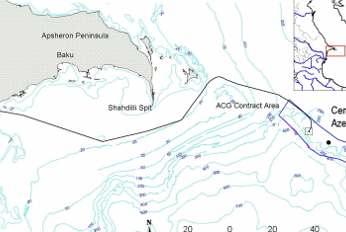 Central Azeri Environmental Survey July 2010 AmC Project 10502Tue, 17/04/2018 - 15:02Sampling was conducted from the vessel Svetlomor 2 by personnel from AmC, the Ministry of Ecology and Natural Resources (MENR) and SOCAR. Sediment samples for physical and chemical analysis consisted of 2 replicates, while 3 replicates were taken for biological analyses. Analyses were carried out at AmC Caspian Environmental+5
Central Azeri Environmental Survey July 2010 AmC Project 10502Tue, 17/04/2018 - 15:02Sampling was conducted from the vessel Svetlomor 2 by personnel from AmC, the Ministry of Ecology and Natural Resources (MENR) and SOCAR. Sediment samples for physical and chemical analysis consisted of 2 replicates, while 3 replicates were taken for biological analyses. Analyses were carried out at AmC Caspian Environmental+5
- Description
Sampling was conducted from the vessel Svetlomor 2 by personnel from AmC, the Ministry of Ecology and Natural Resources (MENR) and SOCAR. Sediment samples for physical and chemical analysis consisted of 2 replicates, while 3 replicates were taken for biological analyses. Analyses were carried out at AmC Caspian Environmental Laboratory.
Sediments around Central Azeri were very poorly sorted, the majority being a mixture of sand and gravel. At many stations, the two replicates were substantially different, indicating patchiness of physical characteristics on a small spatial scale (metres).
LAO was detected at 7 stations in 2010. There was little evidence of change at the majority of stations, and the overall area within which LAO was observed remains very similar to that observed in previous surveys. In general the hydrocarbon concentrations were low or very low and UCM and NPD content were indicative of weathered material being present throughout the survey area.
For the majority of trace metals the data show no clear trends or gradients which could be associated with platform activities. Three elements – barium, cadmium, and lead – exhibited very similar concentration patterns. These were the only elements which indicated a ‘footprint’ which was spatially related to the platform location. A similar association was evident in the 2008 data.
The macrobenthic community was numerically dominated by amphipods which were also the most taxonomically rich group. There was a general tendency towards lower species richness and abundance at stations to the north of, and immediately to the south of, the platform, as was also noted in 2008.
The 2010 data for sediment composition, chemistry and macrobenthic biology suggest that there is an area immediately around the platform in which some degree of sediment alteration is present, and where there is a slightly lower macrobenthic community biomass and diversity relative to more distant stations. However, there are no stations which could be considered biologically impoverished compared to previous surveys.
- Attached documents
- Metadata
- Year
- 2012
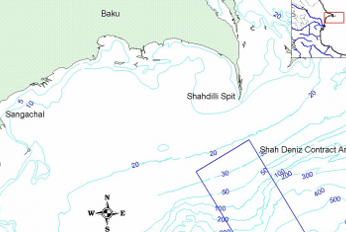 Post Drill Environmental Survey August 2010 AmC Project 10804Tue, 17/04/2018 - 13:32Technical Summary Sampling was conducted from the vessel Svetlomor 2 by personnel from AmC, the Ministry of Ecology and Natural Resources (MENR) and SOCAR. Sediment samples for physical and chemical analysis consisted of 2 replicates, while 3 replicates were taken for biological analyses. Analyses were carried out at AmC Ca+5
Post Drill Environmental Survey August 2010 AmC Project 10804Tue, 17/04/2018 - 13:32Technical Summary Sampling was conducted from the vessel Svetlomor 2 by personnel from AmC, the Ministry of Ecology and Natural Resources (MENR) and SOCAR. Sediment samples for physical and chemical analysis consisted of 2 replicates, while 3 replicates were taken for biological analyses. Analyses were carried out at AmC Ca+5
- Description
Technical Summary
Sampling was conducted from the vessel Svetlomor 2 by personnel from AmC, the Ministry of Ecology and Natural Resources (MENR) and SOCAR. Sediment samples for physical and chemical analysis consisted of 2 replicates, while 3 replicates were taken for biological analyses. Analyses were carried out at AmC Caspian Environmental Laboratory.
In general the survey stations around the SDX-5 well site were found to have well sorted very fine silt sediments with low variation in metal and hydrocarbon concentrations.
Relationships were found to be present between metals Cr, Cu, Fe, Mn, Pb and Zn. With the exception of phenols all hydrocarbon parameters were interrelated, with the proportions of UCM and NPD indicating that all hydrocarbons present were weathered.
The macrobenthic community had a low abundance and species richness and was characteristic of the area and depth. Overall no relationship was found to exist between any of the measured variables and the community structure, with the low species richness and abundance likely being due to the depth of the survey area exceeding 500m.
Comparison to previous baseline data indicated change at one station adjacent to the well location. Samples from this station indicated the presence of WBM contaminated drill cuttings, with coarser grained sediments, very high concentrations of Ba and the absence of the metal relationships evident at all other stations.
Hydrocarbon analysis of samples from this position revealed an LAO signature indicating the presence of SBM in addition to the WBM. These samples also had a high proportion of NPD which suggests the likely presence of cuttings contaminated with LAO and also reservoir fluids.
LAO was detected in one other sample and two stations had slightly elevated concentrations of Ba.
- Attached documents
- Metadata
- Year
- 2011
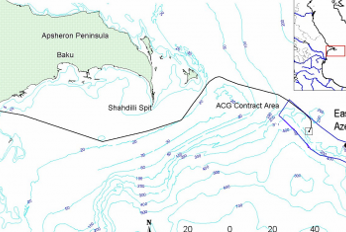 East Azeri Environmental Survey July/August 2010 AmC Project 10503Mon, 16/04/2018 - 16:17Technical Summary Sampling was conducted from the vessel Svetlomor 2 by personnel from AmC, the Ministry of Ecology and Natural Resources (MENR) and SOCAR. Sediment samples for physical and chemical analysis consisted of 2 replicates, while 3 replicates were taken for biological analyses. Analyses were carried out at AmC Ca+5
East Azeri Environmental Survey July/August 2010 AmC Project 10503Mon, 16/04/2018 - 16:17Technical Summary Sampling was conducted from the vessel Svetlomor 2 by personnel from AmC, the Ministry of Ecology and Natural Resources (MENR) and SOCAR. Sediment samples for physical and chemical analysis consisted of 2 replicates, while 3 replicates were taken for biological analyses. Analyses were carried out at AmC Ca+5
- Description
Technical Summary
Sampling was conducted from the vessel Svetlomor 2 by personnel from AmC, the Ministry of Ecology and Natural Resources (MENR) and SOCAR. Sediment samples for physical and chemical analysis consisted of 2 replicates, while 3 replicates were taken for biological analyses. Analyses were carried out at AmC Caspian Environmental Laboratory.
The sediments around East Azeri were very poorly sorted with generally good agreement between replicate samples.Variation between metal concentrations was low.
Metal and hydrocarbon concentrations were, with the exception of Ba and Cd, within the range of baseline conditions for the ACG contract area, and in many instances were lower in 2010 than in 2008.
The condition of the macrobenthic community throughout the survey area was, in 2010, better than in 2008, and was closer to the original baseline conditions. There was no evidence that any physical or chemical parameter was associated with impaired community structure or function, although it was clear that the dominant taxonomic groups were more diverse and abundant in coarser sediments.
Specifically, the results of the 2010 survey show no evidence of sustained impact as a result of continuing platform drilling and production operations; there has (with the possible exception of Cd) been no evidence of direct contamination, and the diversity, abundance and biomass of the macrobenthic community has improved since 2008.
- Attached documents
- Metadata
- Year
- 2012
 Technical Services for Pesticides Inventories, Feasibility Study and Materials Disposal for Azerbaijan (Tauw) (2010)Mon, 16/04/2018 - 16:08This project aimed at inventory training for 10-15 people, mainly from the four Ministries with a designated role in the management of obsolete pesticide stocks (MoA, MoE, MoEm, MoH). The training comprised training on the inventory process, health and safety during inventory, management of inventory data with PSMS, differen
Technical Services for Pesticides Inventories, Feasibility Study and Materials Disposal for Azerbaijan (Tauw) (2010)Mon, 16/04/2018 - 16:08This project aimed at inventory training for 10-15 people, mainly from the four Ministries with a designated role in the management of obsolete pesticide stocks (MoA, MoE, MoEm, MoH). The training comprised training on the inventory process, health and safety during inventory, management of inventory data with PSMS, differen- Description
This project aimed at inventory training for 10-15 people, mainly from the four Ministries with a designated role in the management of obsolete pesticide stocks (MoA, MoE, MoEm, MoH). The training comprised training on the inventory process, health and safety during inventory, management of inventory data with PSMS, different approaches for stores and burial sites and on the job inventory training (practical part). The practical training was performed on sites of five former pesticide stores including one site where pesticides were buried and soil and groundwater sampling was trained. This World Bank project will be followed on by a TCP project approved by FAO regarding capacity building in pesticide management in Azerbaijan. The TCP project aims at (amongst others) a full national inventory, risk quantification and action plans for high risk sites. For repackaging, there is no project approved yet. In the evaluation of the training, the trainees were confident to be able to train others in order to perform a full national inventory. Further assistance might be needed on selected topics. The trainees did not see a problem concerning knowledge transfer. It is recommended to select trainees more carefully in the future. Ideally, the participants of the inventory training are the people doing the inventory and to keep all steps of the pesticide stockpile management cycle in mind during the individual steps in order to have funding for the following steps like repackaging, safeguarding and final disposal or destruction.
- Metadata
- Year
- 2010
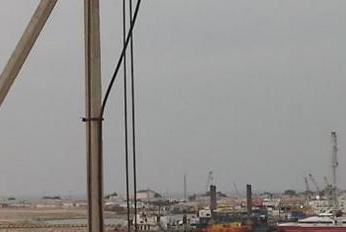 Chirag Environmental Survey 2010 Akvamiljø Caspian 10504Mon, 16/04/2018 - 15:37Sampling was conducted from the vessel Svetlomor 2 by personnel from AmC, the Ministry of Ecology and Natural Resources (MENR) and SOCAR. Sediment samples for physical and chemical analysis consisted of 2 replicates, while 3 replicates were taken for biological analyses. Analyses were carried out at AmC Caspian Environmental+6
Chirag Environmental Survey 2010 Akvamiljø Caspian 10504Mon, 16/04/2018 - 15:37Sampling was conducted from the vessel Svetlomor 2 by personnel from AmC, the Ministry of Ecology and Natural Resources (MENR) and SOCAR. Sediment samples for physical and chemical analysis consisted of 2 replicates, while 3 replicates were taken for biological analyses. Analyses were carried out at AmC Caspian Environmental+6
- Description
Sampling was conducted from the vessel Svetlomor 2 by personnel from AmC, the Ministry of Ecology and Natural Resources (MENR) and SOCAR. Sediment samples for physical and chemical analysis consisted of 2 replicates, while 3 replicates were taken for biological analyses. Analyses were carried out at AmC Caspian Environmental Laboratory.
The sediment characteristics and metal concentrations around Chirag were found to be highly variable within and between stations, with generally little change being observed from 2008. Despite the detection footprint remaining unchanged from previous years, LAO concentrations continue to reduce. THC and PAH concentrations were generally low, with the highest concentrations being recorded at stations directly to the northeast of the platform.
Ba concentrations were highest within the LAO contamination footprint, suggesting the higher concentrations to be the result of historical drilling discharges. As observed on previous years the concentration of Cd was also highest within this area. The LAO and Ba footprint, indicating the extent of contamination from platform drilling discharges was found to extend 1250m NE, 500m N, 750m E, 1000m W and 250m S of the Chirag platform position.
The 2010 macrobenthic community was numerically dominated by polychaetes and amphipods.
Abundance and species richness were highest at stations on the periphery of the survey area and decreased towards the platform. The lowest abundance an taxonomic richness were found at stations within the LAO and Ba footprint, with the sparsest communities being present at stations directly to the northeast of the platform. Despite a continual reduction in hydrocarbon concentrations from 2006, a general reduction in abundance and taxonomic richness has been observed at the Chirag survey area from 2000 to 2008. This negative trend has reversed in 2010, with a survey wide increase in annelid abundance and amphipod abundance and taxonomic richness being observed. No distinct change in the physicochemical characteristics has been observed between 2008 and 2010 that can be attributed to the abrupt reversal of these trends.
No additional physicochemical impacts from operational activities have been observed between 2008 and 2010 and in general contamination levels continue to reduce
- Attached documents
- Metadata
- Year
- 2010
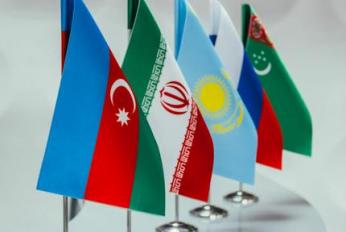 The First session of the Commission for the Conservation and Rational Use of Aquatic Biological Resources and Management of Shared Stocks of Such Resources, 21-23 November 2017, Baku, AzerbaijanMon, 16/04/2018 - 15:20Delegations from five Caspian littoral states - the Republic of Azerbaijan, the Islamic Republic of Iran, the Republic of Kazakhstan, the Russian Federation and Turkmenistan attended the first meeting of the Commission.
The First session of the Commission for the Conservation and Rational Use of Aquatic Biological Resources and Management of Shared Stocks of Such Resources, 21-23 November 2017, Baku, AzerbaijanMon, 16/04/2018 - 15:20Delegations from five Caspian littoral states - the Republic of Azerbaijan, the Islamic Republic of Iran, the Republic of Kazakhstan, the Russian Federation and Turkmenistan attended the first meeting of the Commission.
- Description
Delegations from five Caspian littoral states - the Republic of Azerbaijan, the Islamic Republic of Iran, the Republic of Kazakhstan, the Russian Federation and Turkmenistan attended the first meeting of the Commission.
- Attached documents
- Metadata
- Year
- 2018
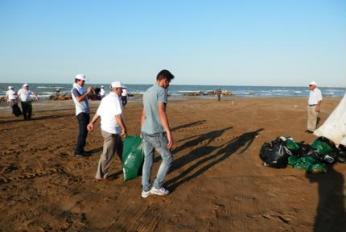 Several events held on the occasion of “Caspian Day” in AzerbaijanMon, 16/04/2018 - 14:15On August 11, 2017, a number of events were held by the Ministry of Ecology and Natural Resources of the Republic of Azerbaijan (MENR) connected with the 12 August – “Caspian Day” for the purpose of raising public awareness with regard to the problems and conservation of the Caspian Sea. A meeting was held at MENR by way of
Several events held on the occasion of “Caspian Day” in AzerbaijanMon, 16/04/2018 - 14:15On August 11, 2017, a number of events were held by the Ministry of Ecology and Natural Resources of the Republic of Azerbaijan (MENR) connected with the 12 August – “Caspian Day” for the purpose of raising public awareness with regard to the problems and conservation of the Caspian Sea. A meeting was held at MENR by way of
- Description
On August 11, 2017, a number of events were held by the Ministry of Ecology and Natural Resources of the Republic of Azerbaijan (MENR) connected with the 12 August – “Caspian Day” for the purpose of raising public awareness with regard to the problems and conservation of the Caspian Sea. A meeting was held at MENR by way of the discussion of environmental issues of the Caspian Sea, implemented works and mechanism of involvement of the public in the protection of the Caspian Sea with the participation of certain governmental bodies, Non-Governmental Organizations (NGOs), as well as the youth. Furthermore, a cleansing action was conducted at the coastal zone of Novkhani beach in order to increase the public role, and strengthen the collaboration with public on the betterment of the environmental state of the Caspian Sea and its littoral zone. It should be noted that 2 hectare area was cleaned during the cleansing action, and the collected wastes were recycled. The main objective of the celebration of “Caspian Day” is the strengths mobilization on the protection of the Caspian Sea environment from pollution, conservation, restoration, sustainable and effective use of biological resources of the sea, and public enlightenment in this sphere.
- Attached documents
- Metadata
- Year
- 2018
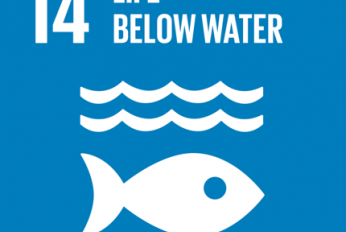 SDG voluntary reviewMon, 16/04/2018 - 14:08
SDG voluntary reviewMon, 16/04/2018 - 14:08
- Attached documents
- Metadata
- Year
- 2018
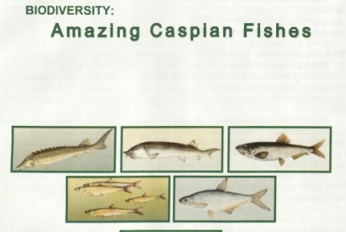 Amazing caspian fishesMon, 16/04/2018 - 14:04
Amazing caspian fishesMon, 16/04/2018 - 14:04
- Attached documents
- Metadata
- Year
- 2018
Document
Technical-scientific meeting on the trans-boundary river basins Ural and Kigash - Astana - June 2016
Document
Kazakhstan's Second National Communication to the Conference of the Parties of the United Nations Framework Convention on Climate Change
Document
Biodiversity Assessment for Kazakhstan
Document
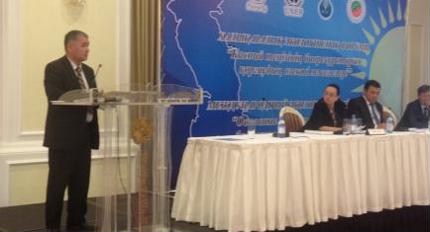
Aktau forum on the problems conservation of the Caspian Sea biodiversity
Document

Akzhaiyk Reserve General Information
Document
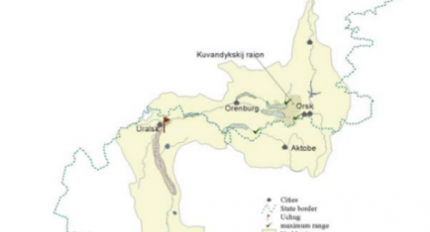
The Ural River Sturgeons: Population Dynamics, Catch, Reasons for Decline and Restoration Strategies
Document
National Caspian Action Plan of Azerbaijan Republic
Document
Statistical Yearbook of Azerbaijan 2015
Document
Second National Communication to the United Nations Framework Convention on Climate Change
Document
Celebration of the caspian day in Azerbaijan
Document
Final Report: Caspian Sea POPs Workshop (2010)
Document
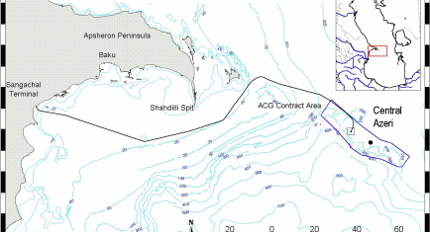
Central Azeri Environmental Survey July 2010 AmC Project 10502
Document
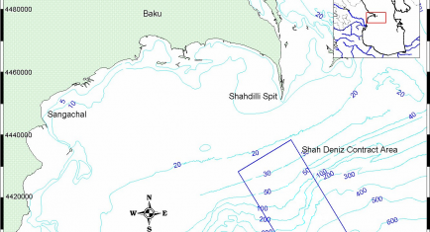
Post Drill Environmental Survey August 2010 AmC Project 10804
Document
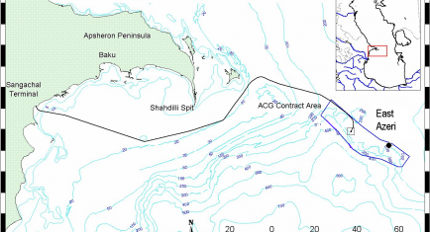
East Azeri Environmental Survey July/August 2010 AmC Project 10503
Document
Technical Services for Pesticides Inventories, Feasibility Study and Materials Disposal for Azerbaijan (Tauw) (2010)
Document
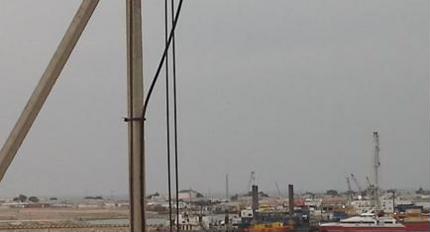
Chirag Environmental Survey 2010 Akvamiljø Caspian 10504
Document
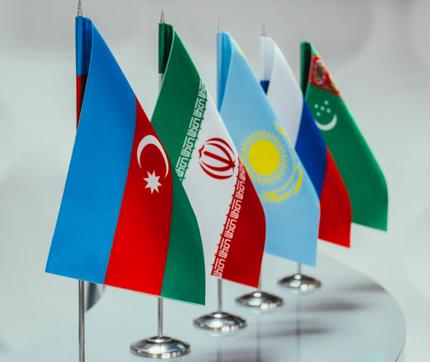
The First session of the Commission for the Conservation and Rational Use of Aquatic Biological Resources and Management of Shared Stocks of Such Resources, 21-23 November 2017, Baku, Azerbaijan
Document
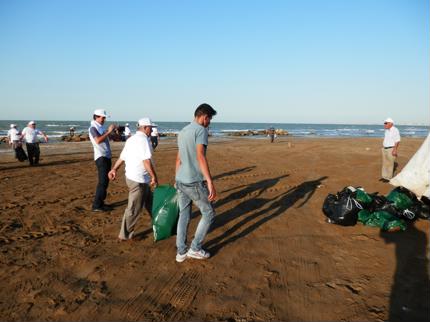
Several events held on the occasion of “Caspian Day” in Azerbaijan
Document
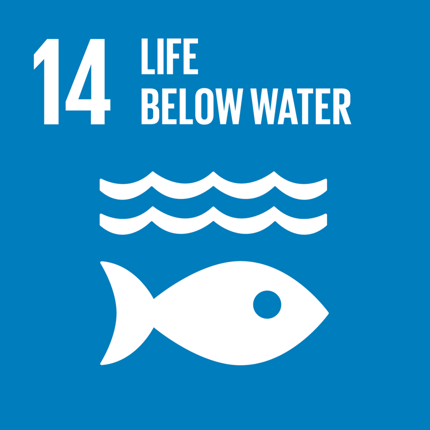
SDG voluntary review
Document
